The fallacy of multitasking and the lost art of 'singletasking'
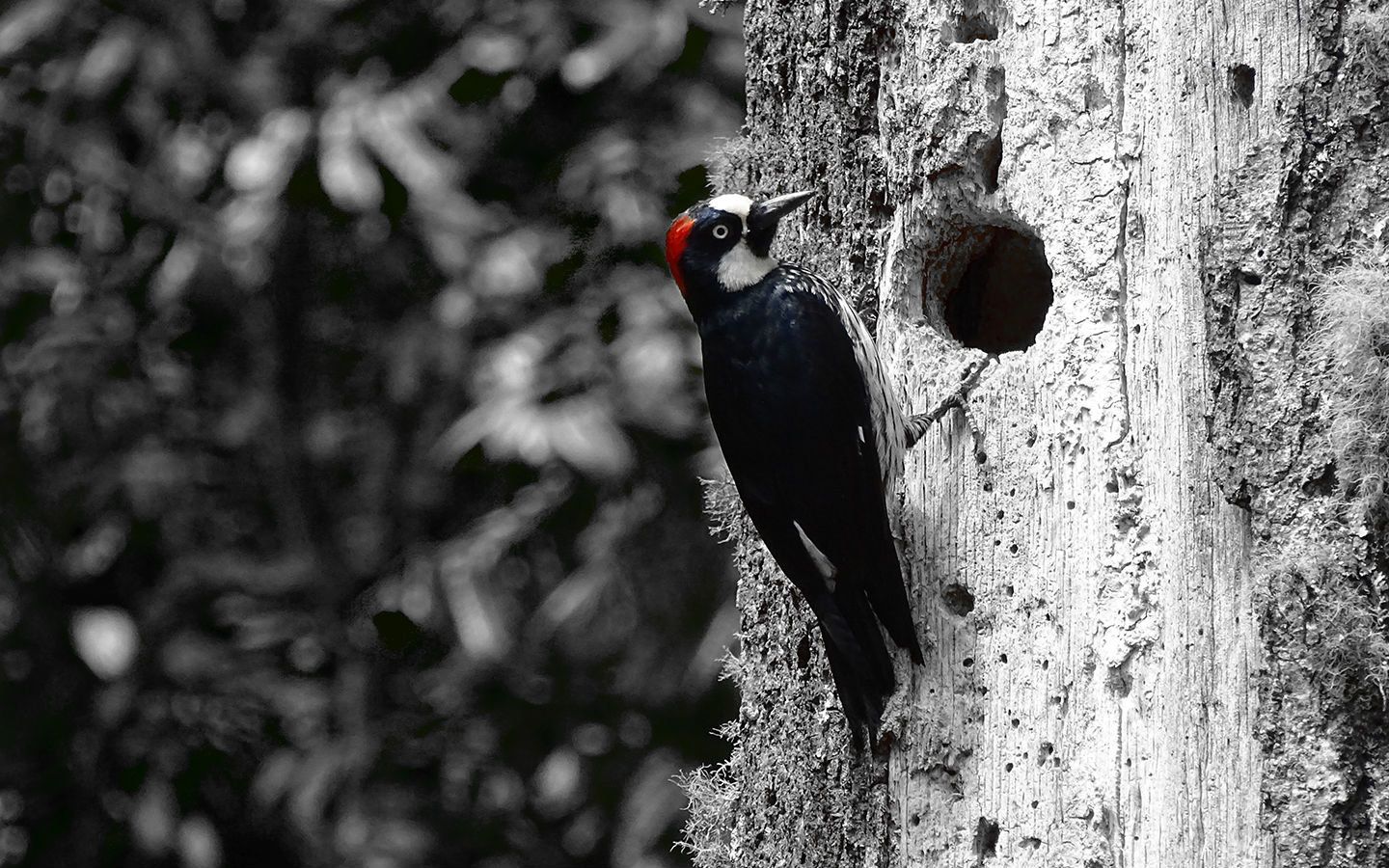
“A woodpecker can tap twenty times on a thousand trees and get nowhere, but stay busy. Or he can tap twenty-thousand times on one tree and get dinner.”
— Seth Godin, The Dip
Research shows that being distracted by an incoming email or a phone call causes our IQ to fall by 10 points. What’s the impact of a 10-point drop? About the same as losing a night of sleep. More than twice the effect of smoking weed.
Texting while driving? According to a study published in the Traffic Injury Prevention journal, it's equivalent to driving with a blood-alcohol level 2-3 times the legal limit.
So why, despite all evidence, is multitasking seen as an attainable and desirable skill meant to aid us in our quest for productivity?
The origins of the “multitasking” myth
Before multitasking became the ubiquitous buzzword it is today, it was used to describe the parallel processing abilities of computers. That changed with the arrival of the first generation of computers and handheld digital devices, which brought with itself seemingly endless possibilities of multitasking.
Advertisements celebrated the notion of using technology to accomplish several things at once. “It's like getting an extra 72 hours of work in a day”, they boldly proclaimed alongside pictures of astonished office workers and men casually talking on the phone while driving.
“Multitasking” made its way into CVs and time management books, becoming a competitive advantage and a skill to develop, hone, and brag about, both at work and in private life.
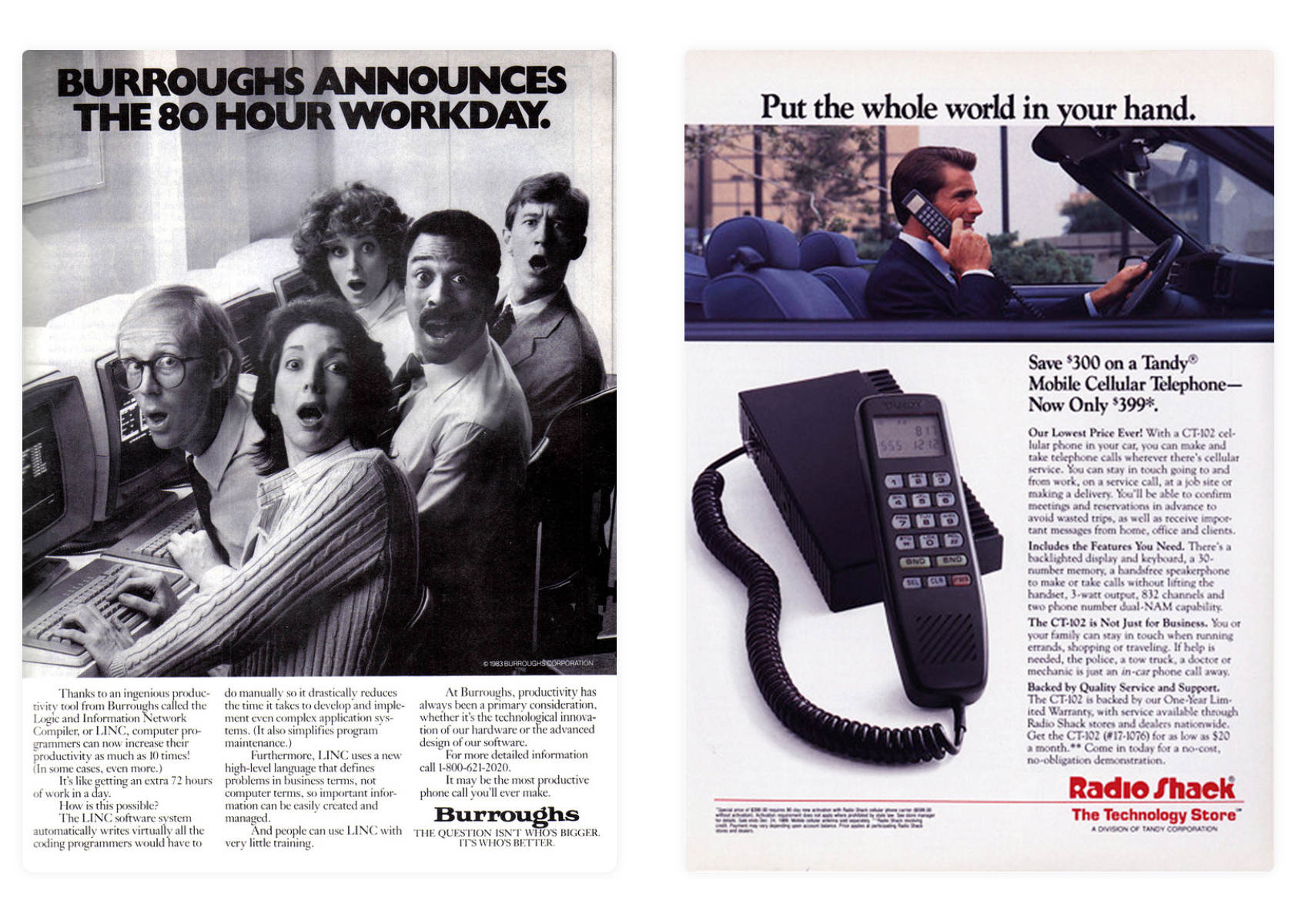
Global shipments of smartphones continued to rise steadily, with a near ten-fold increase over the past decade. The number of apps – in particular, SaaS tools – we use has also skyrocketed with it. A survey from BetterCloud shows that 38% of companies are using 34 SaaS products on average. Cledara did another survey in which nearly a quarter of the respondents had more than 45 apps.
As it happens, this is also the time when productivity started plummeting across most advanced economies.
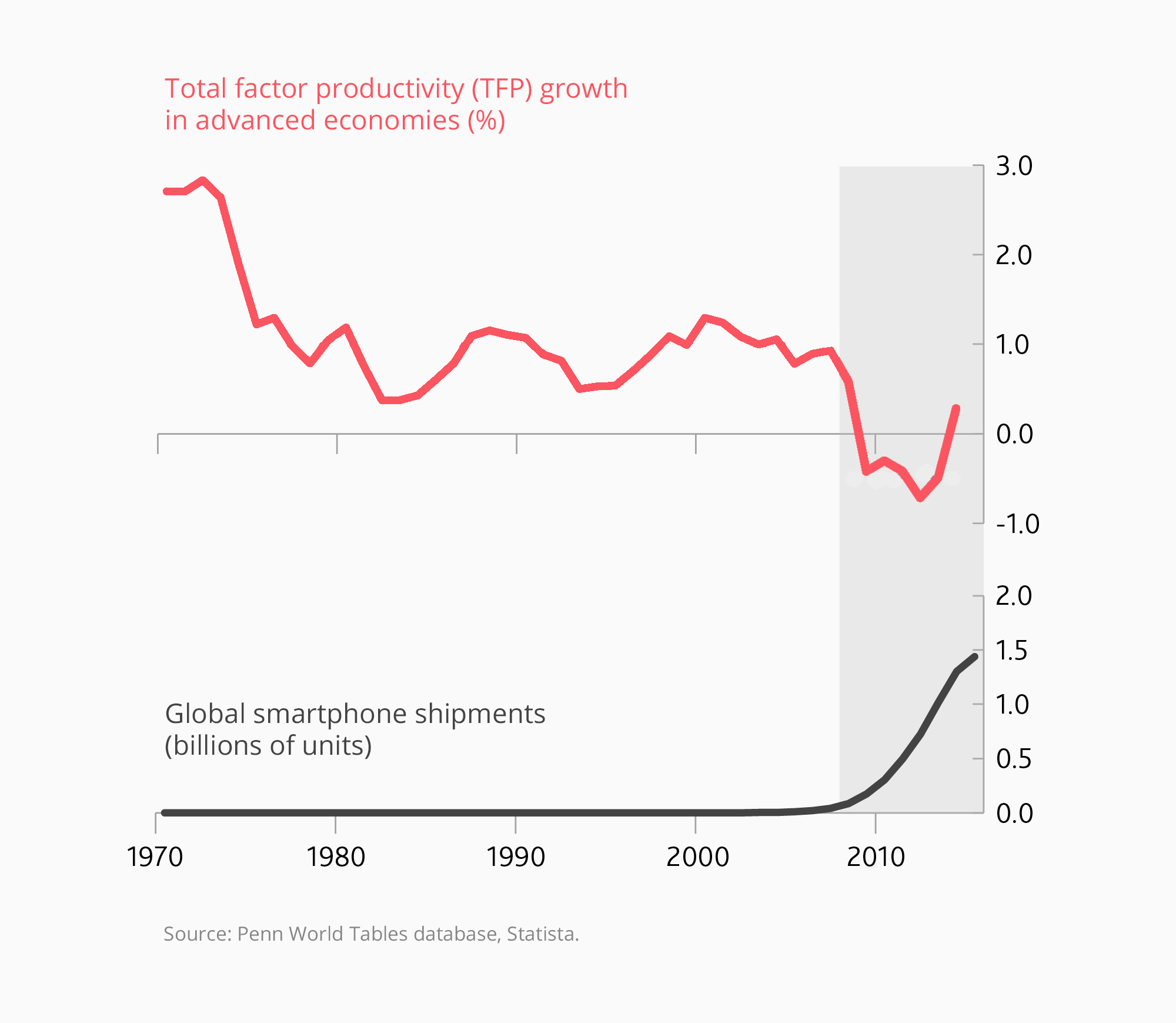
Who could have guessed that we can’t do our best work when our attention is scattered across 12 open apps, 34 ongoing conversations on several devices, and a to-do list a mile long?
Task-switching, not multitasking
First of all, we don’t actually multitask. Earl Miller, a professor of neuroscience at MIT, says we simply aren't able to focus on more than one thing at a time.
What we are able to do is shift our focus from one thing to the other with great speed. But no matter how fast it occurs, task-switching is incredibly unproductive. In fact, it can cause our productivity to go down by as much as 40%.
“Switching from task to task, you think you're paying attention to everything around you at the same time,” says Miller. “But you're actually not.”
But we feel good about ourselves. We stayed busy and have a long list of things we “worked on” for the next daily standup meeting, even if we finished none of the tasks and made little progress in each of them.
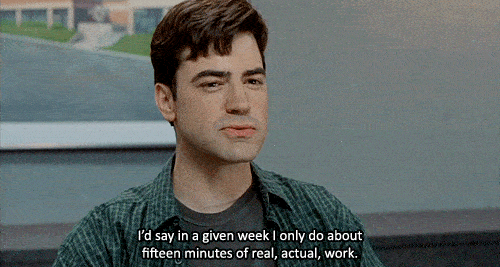
The hidden cost of task and context-switching
For some basic tasks, such as identifying the gender of a face, and then switching to identifying the facial expression, the switch only takes only about 200 milliseconds. Most tasks we perform at work, however, are more cognitively intensive, and it takes us minutes and even hours to get back into the flow.
Let's say you’re working on task A when task B arrives in your inbox.

Ideally, you finish task A and then move on to work on task B.
But let's say task B is urgent, and your boss needs you to work on it right away. You stop working on task A and focus on completing task B before going back to your original work.
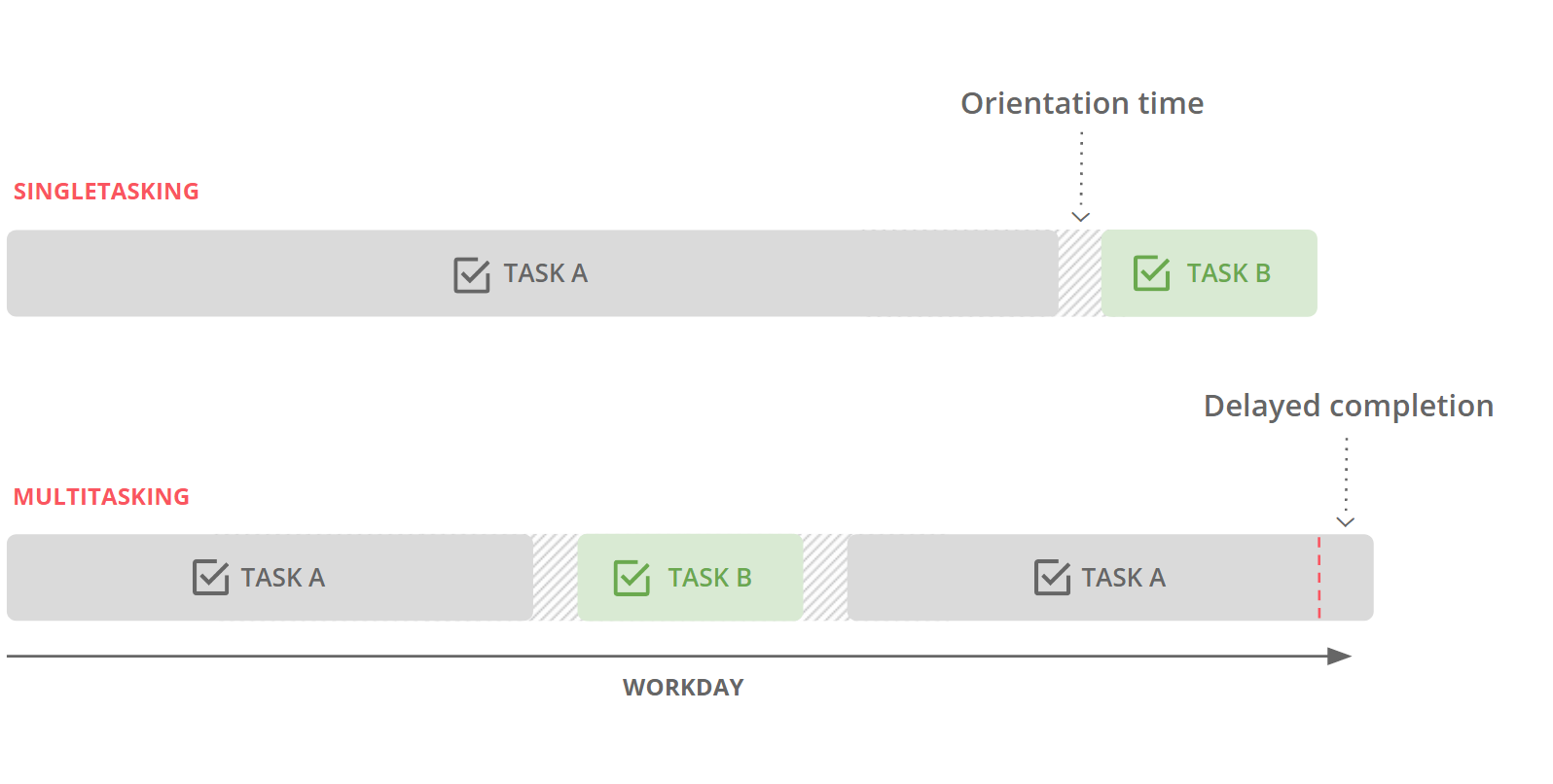
The brain takes time to get into a new train of thought and you lose any momentum you had on the first task. That orientation time delays overall completion, and the more tasks you try to juggle, the more this cost snowballs.
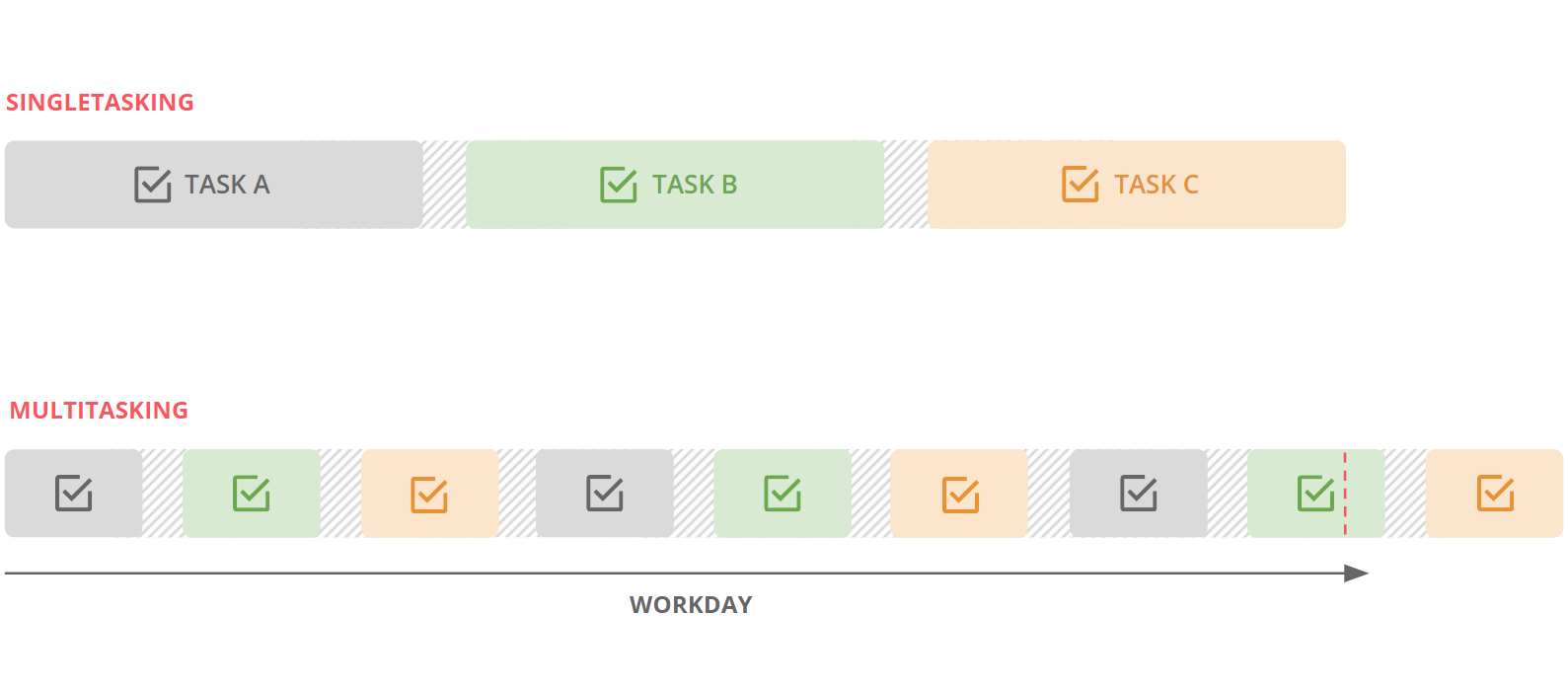
Cultivating attention disorders
Unfortunately, modern workspaces aren’t designed for single-tasking and long periods of sustained attention. In fact, they actively break down our ability to focus, leading us to develop chronic habits resembling the symptoms of attention disorders.
Dr. Edward Hallowell, a psychiatrist who specializes in the treatment of attention deficit and hyperactivity disorder, described it as “Attention Deficit Trait”. ADT is “purely a response to the hyper-kinetic environment in which we live,” writes Hallowell. “Never in history has the human brain been asked to track so many data points.”
Workflows for sustained attention
Multitasking can't always be avoided. But it's possible to devise a workflow that prevents it from becoming a habit. Here are a few simple rules that our team found to be most effective.
Consolidating our tools
Context-switching is no less harmful than task-switching, and when your work is spread across Jira, Google Docs, Slack, email, and a dozen of other tools, even if you try to stay focused on a single project, your attention will inevitably get fragmented.
We try to use as few collaboration tools as possible to minimize the switching and consolidate our work in the most important ones. That primarily includes:
Nuclino for all knowledge and project collaboration.
Front for all external communication with customers.
Slack for emergencies and not-work-related communication.
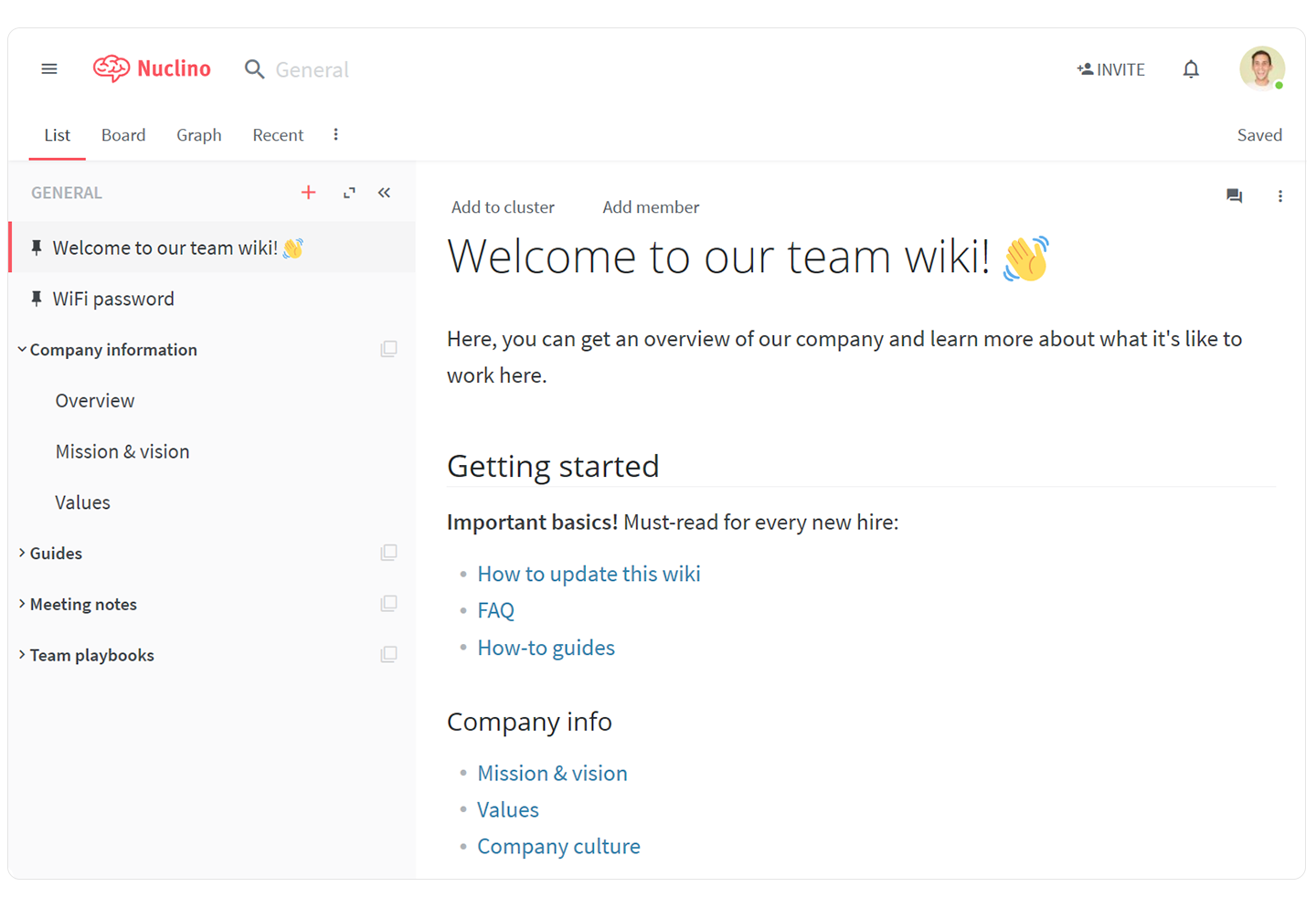
Breaking our Slack addiction
One of the biggest issues you’ll face when fighting context-switching is guilt and FOMO. If you’re away from your company's Slack conveyor belt of messages for too long, you miss opportunities to contribute. You appear inattentive and unreliable. Are you at work at all when there is no green dot next to your name?
So you spend your day with one eye firmly glued to the chat window, always in a state of manic context-shifting.
The only way to successfully break the addiction is when the whole team does it together and creates a shared understanding that Slack is for emergencies only – something our own team did years ago and didn't look back.
Is the office building on fire? Go straight to #general. Otherwise, communicate asynchronously and thoughtfully, instead of one line at a time.
“Do not disturb” days
Most of us are stuck in reactive mode during the workday. There’s always a message to answer or a request to complete. Instead of spending long periods of time focused on a single task, we end up working in bursts of 10-15 minutes.
But to do productive work, we require the time and space to get into the zone. Building context can take hours, and it can be instantly destroyed by a random interruption.
To combat that in our team, we make sure to block out large, uninterrupted chunks of private time (at least half a day at a time) for singletasking through our most important projects, while making it clear to the rest of the team that we are going to be unavailable.
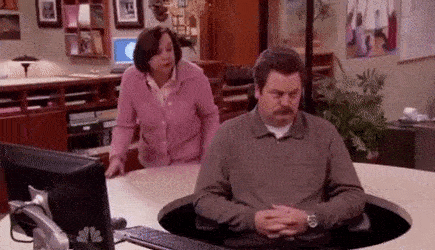
But to be clear: multitasking isn’t always bad. If one of the tasks is really easy, or something you can do unconsciously, such as listening to music, there is little downside. It may even help you focus. Switching to a new task after a long period of focused work refreshes your mind. Deliberately switching tasks to “incubate” a problem we are stuck on can be helpful as well.
The trick is not allowing it to become your default.